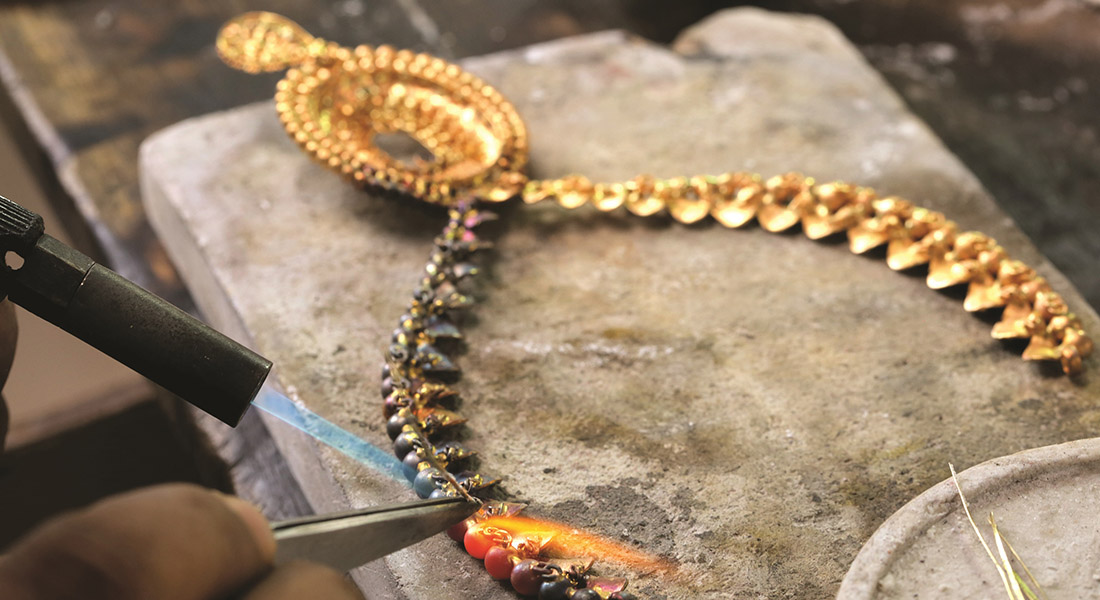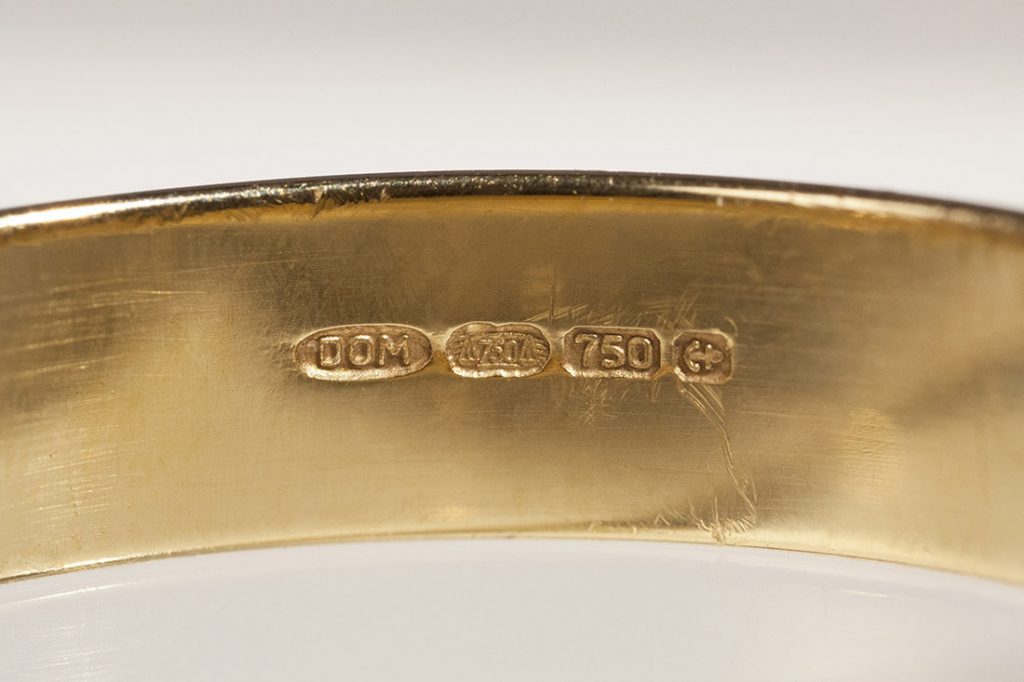India’s tryst with hallmarking of gold, in particular, and silver began somewhere in 2000. Then, under the aegis of the World Gold Council-Bureau of Indian Standards (WGC-BIS) combine, hallmarking of gold jewellery, albeit on a voluntary basis, was first introduced. However, even after almost twenty long years, hallmarking of gold jewellery is not yet universal in the Indian marketplace. Sanjiv Arole examines the reasons.
Voluntary hallmarking in gold was first introduced in 2000. The proposal to make it mandatory was first mooted in 2008. The first deadline for mandatory hallmarking was set for 2013. It would seem that the government through the Bureau of Indian Standards (BIS) has been saying since time immemorial that mandatory hallmarking in gold jewellery would become a reality soon.
However, while the government has kept reiterating that hallmarking would be a reality, the trade seems to be stalling the move on some pretext (often genuine) or the other. This back and forth between the Government and trade has been going on for many years now.
The latest two deadlines, first in 2020 and the second in 2021 were postponed due to the pandemic. However, even the very latest deadline from 1st June that prohibited any sale of jewellery that was not hallmarked has been stalled, as there is a stay order against any coercive action against jewellers till 14th June. So, when will mandatory hallmarking finally begin? Why is it taking so long? Why is the consumer still not the prime concern for all stakeholders?
No less a person than the former RBI Governor Y.V. Reddy had stated in a paper presented by him at an international seminar on gold in 2002 that consumers lost Rs.8,000 crore (Rs.80 billion) annually due to poor quality gold jewellery. That was then — when gold was around $309 per ounce. Now with gold near $1,900 per ounce and with India consuming around 700-800 tonnes of gold annually (jewellery accounting for over 70% plus), and with the rupee substantially weaker at around 73.50 to a dollar against 48.61 in 2002 that amount could be much higher. Moreover, with only around 40% of gold jewellery being hallmarked, the consumer is at a much greater loss.
The question of making the trade fall in line with hallmarking on a voluntary basis around 20 years ago was far from satisfactory. In fact, trade bodies even successfully postponed an attempt by the then government to make hallmarking mandatory from 1st January, 2008. True, some of the arguments made by them about poor infrastructure (read number of hallmarking centres) are still valid. But the trade could have probably done much more on the hallmarking front. The apathy towards hallmarking was not confined only to the jewellery trade. The BIS too appeared lethargic and had little to show by way of more centres in the period from 2008 to 2016, in particular. Even the WGC appeared to have regained its reformist zeal back after a lull for a few years.
In fact, even a civil supplies minister had stated on the floor of the Lok Sabha in early 2000s that quality of jewellery would not be made a prime issue at the expense of jewellers and artisans in the bullion trade. But, why is the quality of jewellery (not just gold but, silver as well) such an issue?
In India a jewellery piece is still charged on the basis of the weight multiplied by the gold price of the day plus a nominal making charge that is variable. All attempts by the trade to make the consumer pay for ornaments as an art piece has not yielded the desired results. This was the case when the gold price in India used to be at a premium of over 60%.
Today, the premium is down to single digits and at times the market is even at a discount to the international price. However, the way the jewellery piece is priced has not changed. In fact, some unscrupulous jewellers often reduce the making charge and at times even waive it. How can they survive and make profits? True, it may be possible to do business for some with deep pockets for sometime even at such low margins. Logically, it would mean palming off lower quality gold as that of higher quality (20-karat or 18-karat instead of 22-karat gold jewellery pieces). Then, there was the case of some unscrupulous traders, who mixed ruthenium with gold to cheat on the weight of gold as well. The consumer was duped both in terms of purity as well as quantity of gold. It gave the whole trade a bad name. Moreover, the trust deficit between the trade and government on one hand and with the consumer on the other only widened. The chasm could be reduced easily. Tough measures were required.
Therefore, the passing of the ‘The Bureau of Indian Standard Bill’ in December 2015 by both houses of parliament was long overdue.
“The Bureau of Indian Standard Bill, passed by the Indian Parliament, empowers the government to make hallmarking of gold and silver mandatory and provides for jail up to two years and fine up to 10 times of the goods’ value in case of violation related to misuse of standards. The Parliament, on 8th March, passed a bill to replace the 30 year- old Bureau of Indian Standards (BIS) Act.
In case of offence committed by any company, every director, manager and secretary responsible for the conduct of the business would be liable, irrespective of the fact that the offence has been committed with or without their consent or connivance.
“In this Act, there is a provision empowering [the] government for mandatory hallmarking of gold,” The Bill positions the BIS as the National Standards Body.”
The WGC, ever since its entry into India around 1993, was on the forefront of reforms in the Indian gold market. It conducted seminars, conferences, symposiums, etc. to push the reforms agenda. Along with the BIS, it was mainly responsible for pushing the hallmarking initiative quite aggressively in the late 1990s. As a result, voluntary hallmarking was introduced in 2000. Soon market forces compelled some more jewellers to opt for hallmarking. This was apart from some reputed jewellery houses that already had high purity standards that they had maintained for years. Some made it their USP as consumers first asked for hallmarked jewellery and later demanded for the same. A leading corporate jewellery chain even asked consumers to sell their jewellery to them and get a 2% rebate even if their old jewellery was of poor quality. This caused most reputed jewellers to opt for 100% hallmarked jewellery in their showrooms.
However, this phenomenon was only seen in big cities or urban areas, the situation in rural and semi-urban areas remained the same. In spite of poor infrastructure (by way of less than 400 hallmarking nationwide), the government sought to make hallmarking mandatory from 1st January, 2008. But, the trade bodies effectively stalled the process by citing very few centres — 381 till 2016.
The BIS on its own could achieve very little by way of promoting hallmarking in India. Moreover, the hallmarking centres themselves were not financially strong or independent enough. For, they were at the mercy of the jewellery houses for their business. It was tough for them to survive and yet be upright in the trading environment. Then, the advent of hallmarking was skewed in the country, while the South and West of India saw rapid growth in hallmarking centres, the other parts of the country saw slow progress on this front. The trade on its part seemed to be happy with the status quo for some time. But, in the last couple of years, the trade, too, seemed keen to make hallmarking mandatory and even asked the government to go ahead with it.
Some trade association officials point out that assaying and hallmarking centres, though 959 in number, only cover 245 out of the 733 districts in the country. They want all districts in the country to be covered. Moreover, in times of pandemic related loss in revenue and business, they aver that mandatory hallmarking of jewellery could severely impact livelihood of millions of workers and close down a majority of retailers. While it is true that the spread of hallmarking is skewed in favour of the western and southern regions of the country, one cannot wait for an ideal scenario to emerge. It is high time that mandatory hallmarking really kicks off.
However, instead of coercive powers with government agencies, a trade body should regulate the implementation of mandatory hallmarking. A peer body would be better placed to educate, convince and even punish erring members. Such a body should have the authority to cancel trade licences in extreme cases. In conjunction with harsh measures there should be an incentive for the jeweller to make quality jewellery. There should be an apparent and real benefit to the jeweller/trader if he conforms to norms.
After all, the 10-tola bar virtually vanished from the scene when import duties were reduced on serialised and pre-numbered gold bars to Rs. 100 per 10 gm. A similar initiative linking a benefit to the trade to conform to quality could work wonders.
The Domestic Council for Gems & Jewellery launched on 29th January, 2019 by the then commerce minister seemed an appropriate body to represent the entire gems and jewellery trade in the country. For, it had as its members representatives of many trade bodies of the gems & jewellery trade in the country. It could have been ideally suited to implement mandatory hallmarking.
Finally, the obnoxious Gold Control Act was abolished in 1990. The thirty years of the Gold Control Act pushed back the gold industry by several decades. One hoped that India would regain its hold in the international market after the Act was removed. It was expected that everything would speed up on the gold reforms front and the gold trade become truly open and India take its rightful place in the international gold ecosystem. Things have moved slowly but now one looks forward to India as an international gold hub in the near future. Even the Gold Exchange is round the corner. But, has the trade done enough for the consumer in these 30-odd years? How long will hallmarking be stalled? How long will the consumer suffer?
Victor Hugo famously said, “Nothing in the world is as powerful as an idea whose time has come.” Surely, the consumer deserves better than what is dished out to her. If not now, when will she get her due? Certainly, there is no way out than to implement hallmarking. That too, pronto!
Disclaimer: The opinions expressed in this article are those of the author and do not necessarily reflect the views of the GJEPC.


